Textile art is having a revival, as the artists on show at the Barbican exhibition, Unravel: The Power and Politics of Textiles in Art, attest.
The show is a comprehensive journey through the themes explored by artists utilising textiles as a medium. But it also invites deeper reflection on the societal shifts that have prompted a revival of the art form. Historically associated with femininity, domesticity and craft, textiles possess a deceptive simplicity that conceals their potential for subversion and political dissent.
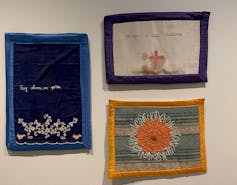
The exhibition focuses on this subversive nature of textiles in contemporary art through works by artists including Feliciano Centurión. His delicate floral embroideries on modest blanket squares are accompanied by poignant stitched phrases such as “Soy alma en pena” (“I am a soul in pain”) and “Estoy vivo” (“I am alive”). These words express his battle with HIV and affirm his queer masculine identity.
Małgorzata Mirga-Tas’s collaged textile hanging, meanwhile, revises historical depictions of the Romani community. In doing so, the artist reclaims space for stories excluded from historical accounts. And Igshaan Adams’s immersive ethereal installation, crafted from beads and wire structures, prompts reflection on the collective opposition to artificially imposed borders in South Africa’s apartheid regime.
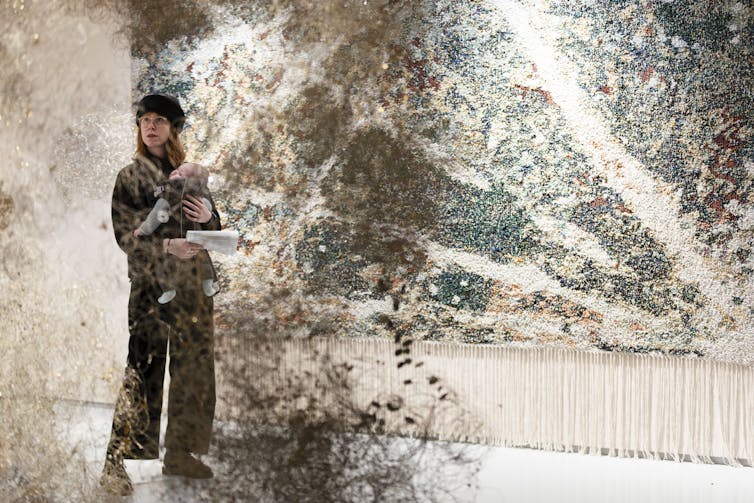
The changing landscape of exhibiting textiles
The exhibition also includes works by established figures such as Sheila Hicks and Magdalena Abakanowicz. Their works were displayed in the Wall Hangings exhibition at New York’s Museum of Modern Art in 1969, a pivotal show that legitimised the use of fibre within the realm of the fine arts.
Using unorthodox and found materials, female artists of this era departed from the European tapestry tradition. Their three-dimensional fibre structures both physically and metaphorically reclaimed space in an art world largely dominated by their male counterparts.
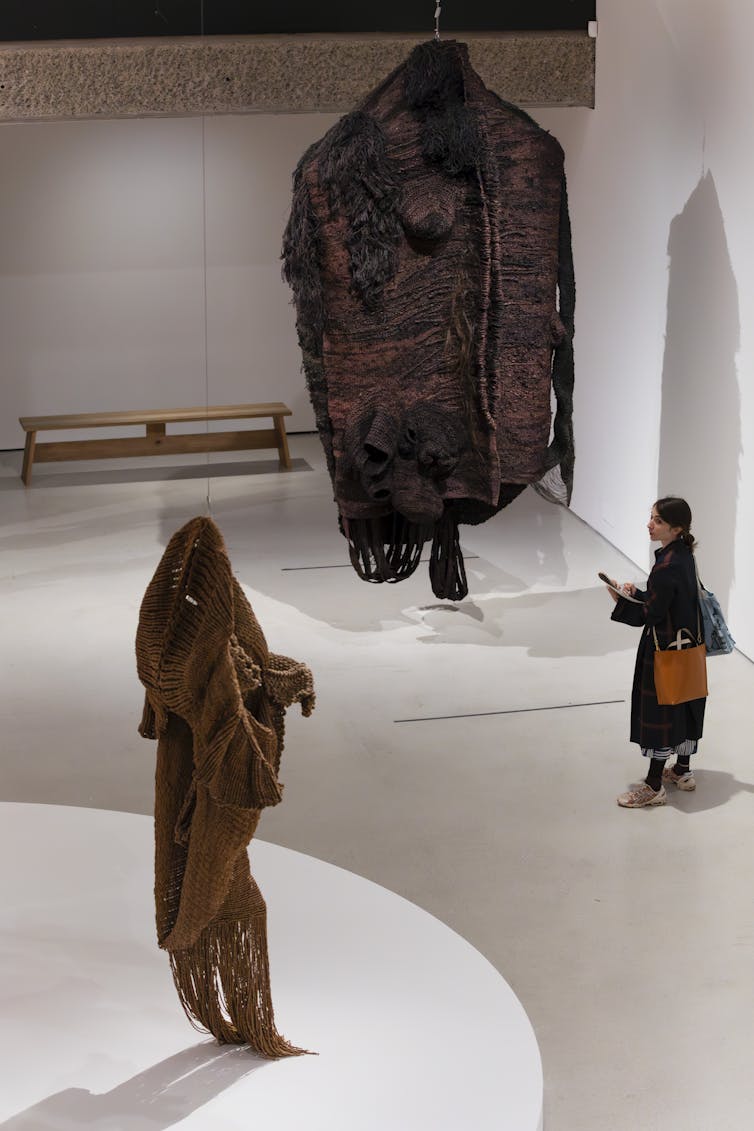
In the catalogue for the Barbican exhibition one of the curators, Lotte Johnson, remarks: “Back in 2020, we had collectively noted how textiles were proliferating across contemporary art practices.” This proliferation can be traced back to recent societal changes, as well as the instrumental role of cultural intermediaries including museums and private galleries.
Social movements like #MeToo and Black Lives Matter have highlighted the need to tell a more inclusive history of art and acknowledge the contributions of women, people of colour and indigenous artists who have been overlooked in traditional accounts.
Further, the global spread of biennials and fairs, along with increase mobility of curators, has contributed greater visibility of artists from continents such as Africa and South America. Their practices often employ textiles and recycled elements, transcending the European dichotomy between art and craft.
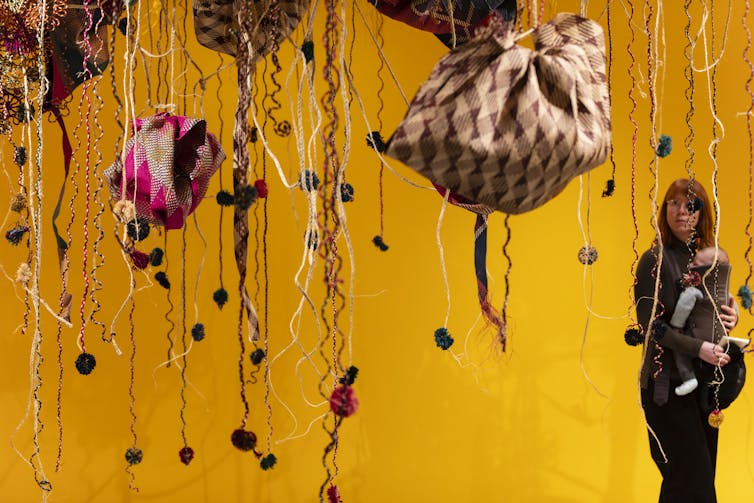
The consumer demand for handmade textile items – a trend in response to an increasingly digitised society – has also played a role in the renewed appreciation for textile-based art. Additionally, movements associated with environmentalism and third-wave feminism have embraced traditionally domestic practices such as knitting and crocheting. These enjoyed further popularity during the COVID pandemic as a stress-coping mechanism.
Museums have been pivotal in endorsing the revival of textiles. And the increased prevalence of women in positions of power at cultural institutions is partly why. The retrospective on Anni Albers at the Tate Modern in 2018, for example, is much-cited as a show that put the spotlight back on textiles. The show was supported by the appointments of Frances Morris as director of Tate Modern in 2016 and Maria Balshaw as director of Tate the following year.
Additionally, a new generation of curators are shaping curatorial programmes to include a more diverse range of artistic practices. These curators were educated by feminist art history scholars such as Griselda Pollock and have now moved into influential roles within prominent art institutions.
Interest in textiles is also gaining momentum within the private art sector. According to the art market database Artprice, textile works generated US$40 million (£31.6m) in 2022, a significant increase from $13 million in 2012.
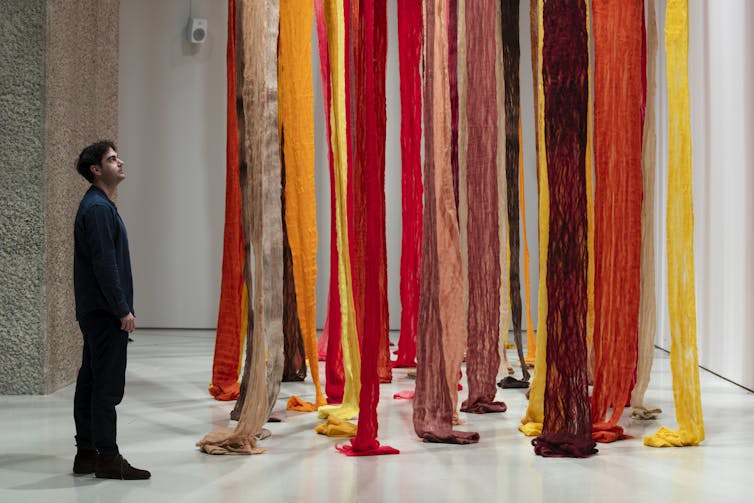
Private galleries are exerting a growing influence on the art world, and have contributed significantly to the visibility of fibre art and textiles. Last October, the private gallery Alison Jacques opened a new space in London with a solo show on Sheila Hicks. At the Brafa art fair in Brussels in January 2024, Richard Saltoun showcased Textile Pioneers, which exhibited works by Barbara Levittoux-Świderska and Magdalena Abakanowicz, among others.
While the promotion of female textile artists is certainly a welcome shift towards a more inclusive representation of historical artistic contributions, the private sector’s commercial considerations cannot be overlooked. Female artists have been defined as “the bargain of our time”, and textile works are an affordable purchase for underfunded institutions and collectors who cannot afford works by male artists from the same period.
Moreover, the practicality of textiles, being easier to transport and install compared to paintings, further enhances their appeal to galleries.
The resurgence of textiles in contemporary art provides a vital opportunity for conversation and revision within both the art world and society at large. It also highlights the complex interplay of cultural intermediaries who juggle idealistic efforts and pragmatic commercial interests.

Looking for something good? Cut through the noise with a carefully curated selection of the latest releases, live events and exhibitions, straight to your inbox every fortnight, on Fridays. Sign up here.

